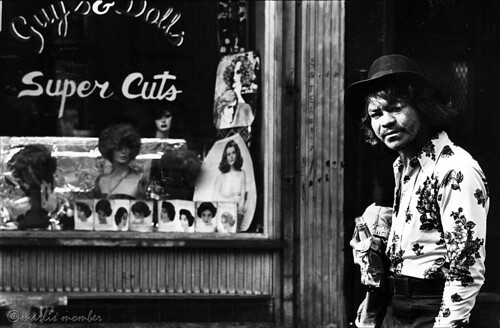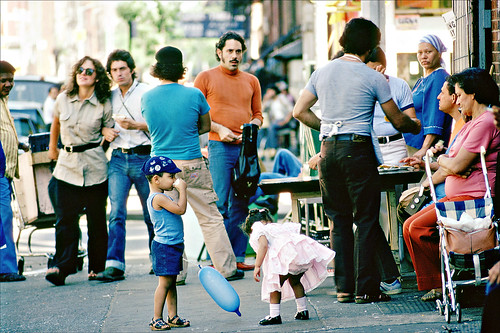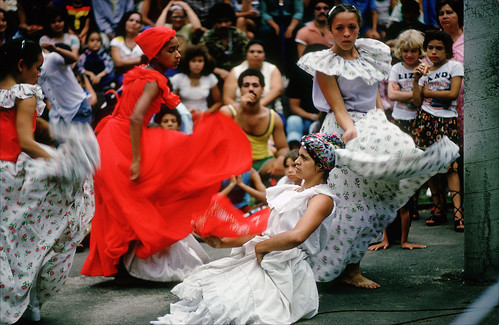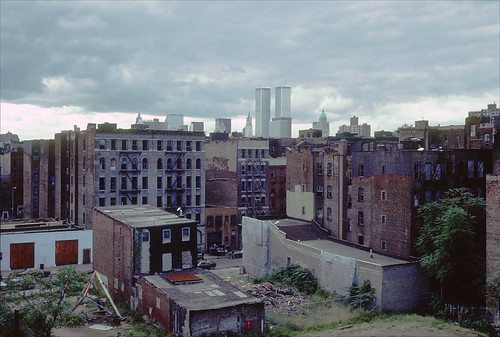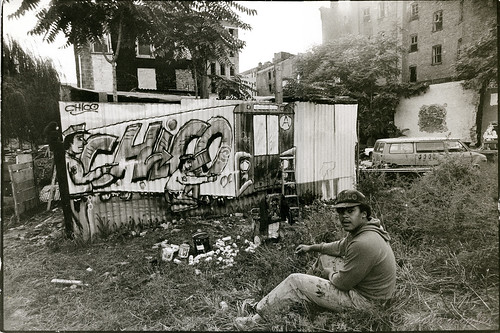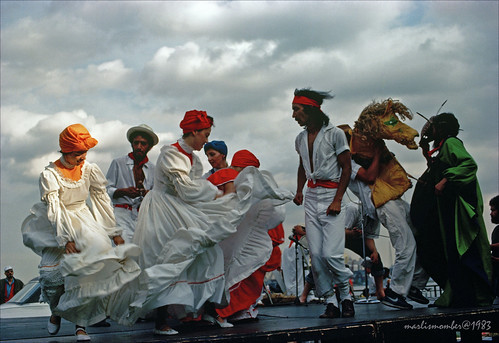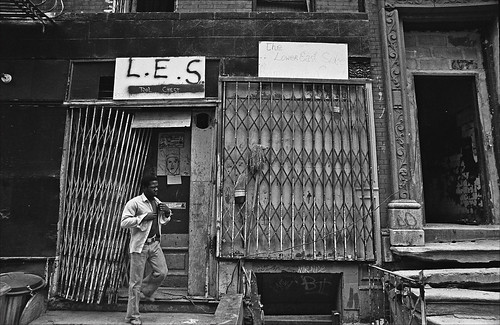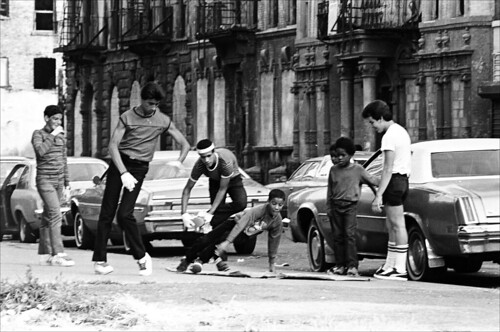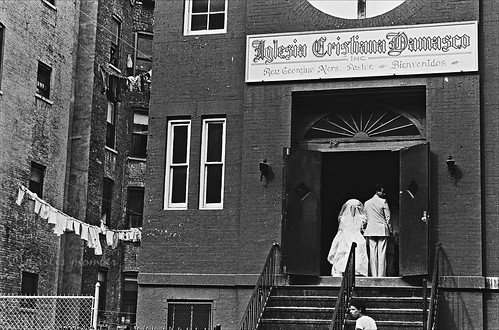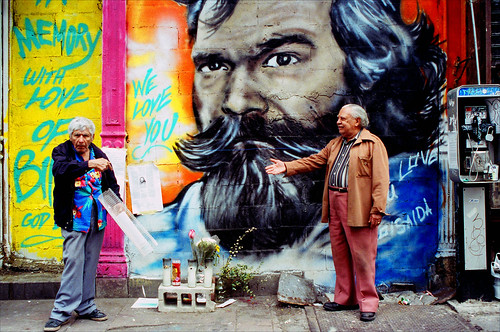For more than three decades, Marlis Momber has chronicled the changes that have occurred in the East Village and the Lower East Side – Loisaida. She reflects on 30 years of observing a community in transition.
“I hope we will learn from this having lost against gentrification, but it was inevitable,” said Ms. Momber in her East Fourth Street apartment as she sorted through photos, such as this image from 1986. “There’s this sense now that we must reconnect — preserve and continue — or all the earlier stuff will be for naught.”
1975
“He was one of the many Vietnam veterans who were dismissed from their duties without jobs or health care; many became drug addicts. Super Cuts was a small storefront business — the only one on Avenue A, B, and C, except for a few supermarkets. He was hoping to score a free haircut and shave.”
1976
“A 1976 street scene on the corner of Avenue D and Fourth Street. The couple was ‘lost’ but enjoyed the scene. The attitude of the woman on the right was a mixture of curiosity and hostility. There was a domino game set up on top of a wooden cage full of crabs from the East River. Summer Sunday afternoons in Loisaida were full of street activities before the drug trade took over.”
1979
“Performing with El Grupo Cemi at La Plaza Cultural on Avenue C and East Ninth Street, now a playground and park for, and controlled by, the new population, with no spontaneous events whatsoever. The young dancers all grew up in Loisaida and learned the traditional dances from their family members, most of them members of grassroots organizations.”
1982
“The neighborhood as viewed from East Ninth Street and La Plaza Cultural, an empty lot turned into one of the most vibrant open spaces, before gentrification, dwarfing the World Trade Center.”
1983
“Here is the graffiti artist Chico depicting the fate of 25-year-old subway graffiti artist, Michael Stewart, who died after police arrested him on Sept. 15, 1983 for scribbling graffiti on the subway.”
1984
“The Bomba y Plena Dance Troupe at the amphitheater at the East River Park. The amphitheater and band stand at Tompkins were used by the community at large for birthday parties, cook outs and grassroots performances.”
1984
“Larry Richard occupied the first floor and part of this abandoned building at 332 East Fourth Street between Avenues C and D. Larry lent out tools for reconstruction and collected discarded computers for repair and later use by the community.”
1985
“Boys on East Fourth Street between Avenues C and D. The streets offered a ready playground and rehearsal space when community centers were unavailable for the young bloods.”
1986
“The groom’s last look back at East Fourth Street between Avenues B and C. Horsedrawn carriages and large limos were always demonstrating that a wedding is an occasion to rise above the dismal streets and images of dreariness.”
1986
“One of the many ‘Not For Sale’ rallies, here on East Third Street between the Ryan-NENA Community Health Center and the Third Street Women’s Residence Shelter.”
1992
“Jorge Brandon, a.k.a. El Coco, and Señor Nadal in front of Chico’s mural, created during the night after Bimbo Rivas’ death, which was caused by heart attack. Jorge and Señor Nadal were my best teachers when it came to understanding the past.”
Marlis Momber is a community contributor to The Local East Village. A collection of her photographs is part of an exhibition, “Preserve or Forget,” which runs until Jan. 30 at the Theater for the New City, 155 First Avenue. Her work can also be viewed at www.vivaloisaida.org.




